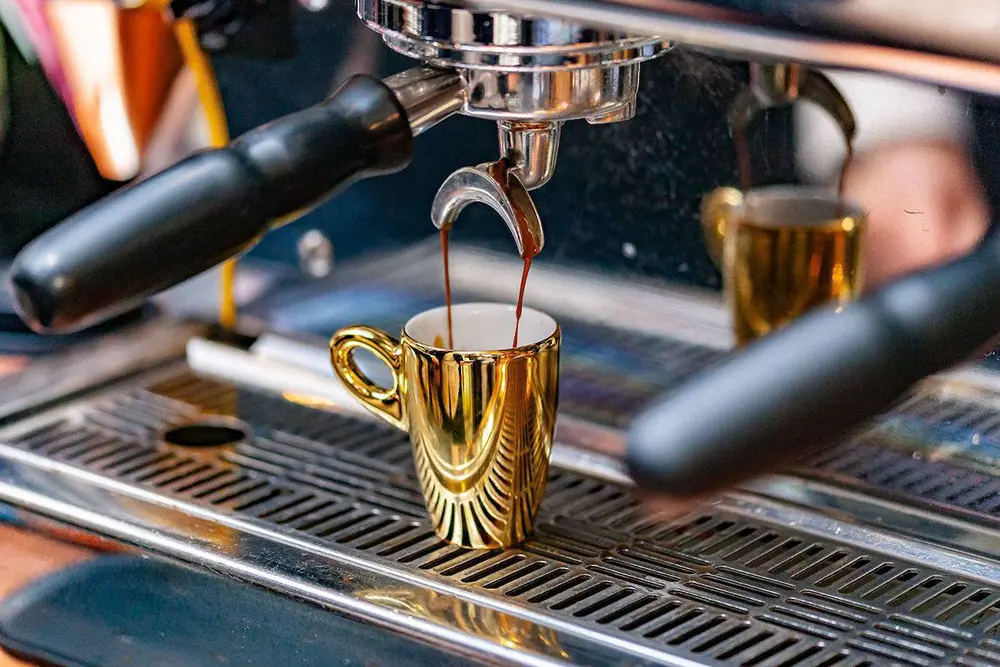Espresso lovers know that pressure plays a huge role in extracting the perfect shot. But how many bars of pressure do you really need? Is more pressure always better? Whether you’re using a home espresso machine or a commercial one, this guide will help you understand the science behind espresso pressure and how it affects flavor, crema, and overall quality.
What Does “Bars of Pressure” Mean?
Bars of pressure refer to the amount of force pushing hot water through the coffee grounds in an espresso machine. One bar is equal to atmospheric pressure at sea level (about 14.7 psi). The higher the pressure, the faster and more forcefully water is pushed through the coffee puck.
Why Pressure Matters in Espresso Brewing
Pressure is crucial because it affects:
- Extraction time – The right pressure ensures water passes through the coffee at an optimal speed.
- Crema formation – A golden, creamy layer on top of espresso is a sign of a well-extracted shot.
- Flavor balance – Too little or too much pressure can lead to weak or bitter espresso.
What Is the Ideal Pressure for Espresso?
9 Bars: The Gold Standard
The traditional and widely accepted standard for espresso is 9 bars of pressure. This was established by Italian espresso pioneers and remains the benchmark for quality espresso shots.
- Optimal Extraction Time – A shot should take around 25-30 seconds to extract.
- Balanced Flavor – 9 bars provide a well-balanced shot with a rich taste and smooth crema.

15 Bars vs. 9 Bars: Which Is Better?
Many consumer-grade espresso machines advertise 15 bars of pressure, leading to confusion. However, more pressure doesn’t necessarily mean better espresso.
- Pump vs. Brew Pressure – Machines with a 15-bar pump usually regulate the actual brewing pressure down to 9 bars.
- Potential Over-Extraction – If a machine consistently delivers 15 bars during brewing, it may result in over-extracted, bitter espresso.
7-8 Bars: A Lower Alternative
Some baristas prefer slightly lower pressure, around 7-8 bars, for a gentler extraction that can enhance sweetness in certain coffee beans.
How Espresso Machines Regulate Pressure
Most espresso machines, especially those with a vibratory or rotary pump, have built-in mechanisms to regulate pressure.
- Vibratory Pumps – Found in home espresso machines, these pumps operate at 15 bars but usually drop to 9 bars at the group head.
- Rotary Pumps – Used in commercial machines, they provide consistent 9-bar pressure for a stable extraction.
Can You Adjust the Pressure on an Espresso Machine?
Some high-end espresso machines allow users to modify pressure settings. Adjusting pressure can help you fine-tune your shot depending on:
- Coffee bean type
- Grind size
- Brewing style (traditional vs. modern espresso techniques)
Pressure Profiling: A New Trend
Advanced baristas use pressure profiling, which varies pressure throughout extraction to enhance flavors. Machines like the La Marzocco Linea or the Decent Espresso DE1 allow precise control over pressure curves.
How to Tell if Your Espresso Has the Right Pressure
Signs of proper extraction at 9 bars:
✔ Thick, golden crema
✔ Balanced flavors (not sour or bitter)
✔ Rich aroma
✔ 25-30 second shot time
Signs of incorrect pressure:
❌ Thin or no crema → Too little pressure
❌ Bitter, over-extracted shot → Too much pressure
❌ Sour, weak shot → Inconsistent pressure
Conclusion
For the perfect espresso, 9 bars of pressure is the sweet spot. While machines may advertise higher pressure, they often regulate down to 9 bars for optimal extraction. Understanding and controlling your espresso machine’s pressure can make a big difference in your shot quality.
FAQs
1. Do all espresso machines use 9 bars?
No, but most quality machines are designed to deliver 9 bars of pressure at the group head for optimal espresso extraction.
2. Can I make good espresso with a 15-bar machine?
Yes, because most 15-bar machines reduce pressure to 9 bars during brewing. The key is ensuring proper grind size, tamping, and fresh coffee.
3. What happens if my espresso machine has too much pressure?
Too much pressure (e.g., 12-15 bars during brewing) can lead to over-extraction, resulting in bitter flavors and excessive crema.
4. Is 9 bars better than 15 bars?
For espresso extraction, 9 bars is the industry standard. A 15-bar pump doesn’t mean better espresso if the machine isn’t regulating pressure properly.
5. Can I adjust my espresso machine’s pressure?
Some machines allow pressure adjustments, but most home machines have fixed settings. If you have a machine with pressure profiling, you can experiment for different flavor profiles.